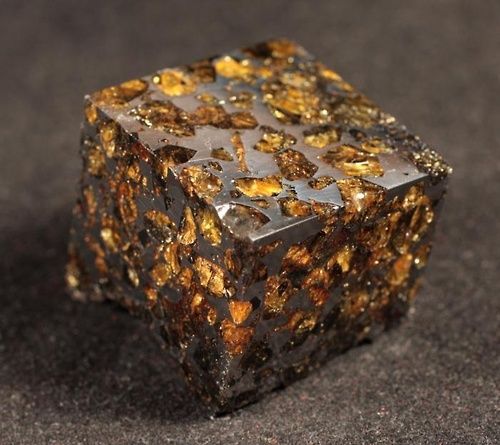
Stones, those seemingly ordinary pieces of the Earth’s crust, can sometimes exhibit extraordinary and bizarre characteristics that capture the imagination of geologists, collectors, and enthusiasts alike. From the otherworldly to the mysteriously artistic, here are five of the most bizarre and unique stones that have fascinated scientists and collectors for generations.
Pallasite Meteorites, Space Gems
Pallasite meteorites are a true cosmic wonder. These rare stones are composed of olivine crystals embedded in a matrix of iron-nickel, making them look like gems from another world. Pallasites are believed to originate from the boundary between a planet’s core and mantle, and they often contain valuable gem-quality olivine crystals known as peridot. These cosmic jewels are a testament to the violent history of our solar system, where collisions and cosmic cataclysms shape the most bizarre and beautiful objects.
Yowah Nut Opals, Nature’s Puzzle
Yowah Nut opals are a variety of precious opal found in the Yowah region of Queensland, Australia. What makes these opals truly unique are their intricate patterns and fossil-like appearance. The name “Yowah Nut” comes from the rounded shapes and the surprising discoveries within. These opals often contain intricate patterns, resembling dendritic structures, plants, or even underwater scenes. Some collectors believe that each Yowah Nut opal tells a geological story through its mesmerizing patterns, making them intriguing conversation pieces.
Moqui Marbles, Iron Concretions
Moqui Marbles, also known as Moqui balls or Shaman stones, are unusual iron concretions found in the deserts of the American Southwest. These small, spherical stones have an intriguing history, having been used by Native American tribes for centuries in spiritual and healing rituals. Moqui Marbles have a metallic core and a sandstone shell, giving them a unique appearance. The exact formation process is still a subject of scientific debate, adding to their mystique.
Klerksdorp Spheres, Geological Enigma
Klerksdorp Spheres are small, spherical objects discovered in South Africa, known for their puzzling appearance. These metallic-looking spheres have perfectly concentric grooves around their centers, resembling man-made artifacts. However, they are believed to be natural formations, possibly created by the action of pyrite, a mineral that can naturally grow in spherical shapes. The Klerksdorp Spheres continue to baffle scientists and have even sparked debates about ancient civilizations and extraterrestrial involvement.
Stromatolite, Living Fossil
Stromatolites are ancient rock-like structures formed by the layered growth of microbial communities, primarily cyanobacteria, in shallow aquatic environments. These formations have been around for over 3.5 billion years, making them one of the oldest living organisms on Earth. The bizarre aspect of stromatolites is their fossil-like appearance, despite being living entities. These structures offer insights into the early history of life on our planet and have played a vital role in our understanding of Earth’s geological and biological evolution.















